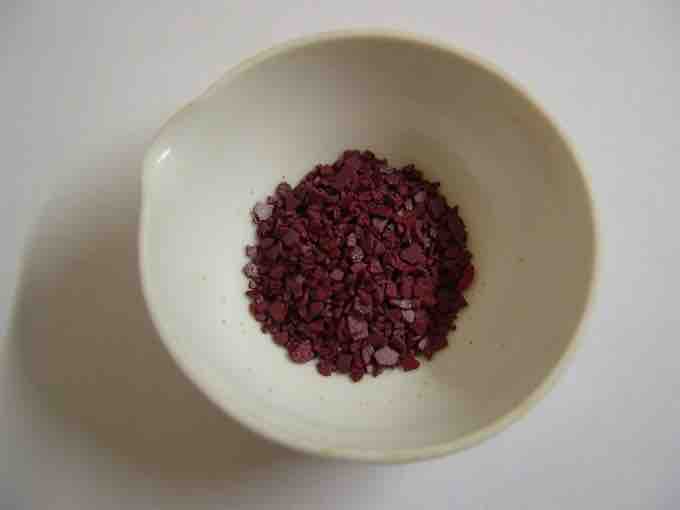Properties of Chromium
Chromium is a steely-gray, lustrous, hard metal that takes a high polish and has a high melting point. It is also odorless and malleable. In larger amounts and in different forms, chromium can be toxic and carcinogenic. The most prominent example of toxic chromium is hexavalent chromium (Cr(VI)). Abandoned chromium production sites often require environmental cleanup.
Chromium is remarkable for its magnetic properties: it is the only elemental solid which shows antiferromagnetic ordering at room temperature (and below). Above 38 °C, it transforms into a paramagnetic state. Chromium is a member of the transition metals, in Group 6. Chromium has an electronic configuration of 4s13d5, owing to the lower energy of the high spin configuration.
Oxidation States of Chromium
Chromium exhibits a wide range of possible oxidation states, where the +3 state is the most stable energetically. The +3 and +6 states are the most commonly observed in chromium compounds, whereas the +1, +4 and +5 states are rare.
Cr3+ Compounds
A large number of chromium(III) compounds are known. The Cr3+ ion has a similar radius (63 pm) to the Al3+ ion (radius 50 pm), so they can replace each other in some compounds, such as in chrome alum and alum. When a trace amount of Cr3+ replaces Al3+ in corundum (aluminium oxide (Al2O3)), the red-colored ruby is formed. Chromium(III) ions tend to form octahedral complexes. The colors of these complexes is determined by the ligands attached to the Cr center.
Chromium(III) hydroxide (Cr(OH)3) is amphoteric, dissolving in acidic solutions to form [Cr(H2O)6]3+ and in basic solutions to form [Cr(OH)6]3−. It is dehydrated by heating to form the green chromium(III) oxide (Cr2O3), which is the stable oxide with a crystal structure identical to that of corundum.
Cr6+ Compounds
Chromium(VI) compounds are powerful oxidants at low or neutral pH. Most important are the chromate (CrO42-) and dichromate (Cr2O72-) anions, which exist in equilibrium:
The dominant species is therefore, by the law of mass action, determined by the pH of the solution. The change in equilibrium is visible by a change from yellow (chromate) to orange (dichromate), such as when an acid is added to a neutral solution of potassium chromate. At yet lower pH values, further condensation to more complex oxyanions of chromium is possible. Both the chromate and dichromate anions are strong oxidizing reagents at low pH.

Chromium (VI) oxide
Chromium (VI) oxide is red and a powerful oxidant.
The Other Oxidation States of Chromium
The oxidation state +5 is only realized in few compounds but are intermediates in many reactions involving oxidations by chromate. The only binary compound is the volatile chromium(V) fluoride (CrF5). Compounds of chromium(IV) (in the +4 oxidation state) are slightly more common than those of chromium(V). The tetrahalides, CrF4, CrCl4, and CrBr4, can be produced by treating the trihalides (CrX3) with the corresponding halogen at elevated temperatures.
Many chromium(II) compounds are known, including the water-stable chromium(II) chloride (CrCl2). The resulting bright blue solution is only stable at neutral pH. Most chromium(I) compounds are obtained by oxidation of electron-rich, octahedral Cr complexes. As verified by X-ray diffraction, a Cr-Cr quintuple bond (length 183.51(4) pm) has also been described.